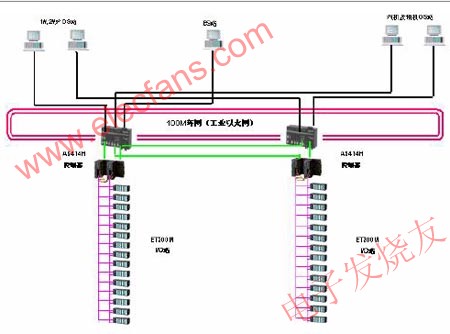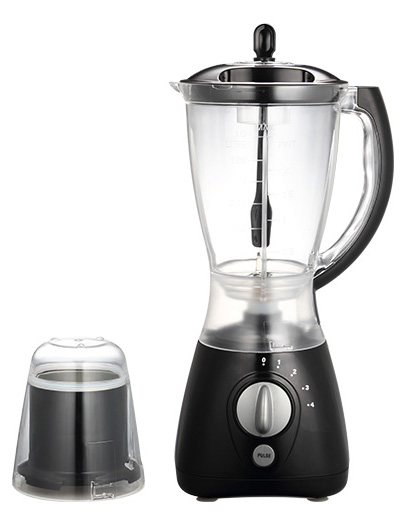A system overview With the rapid development of the economy, the pace of urbanization is also accelerating, and the problem of urban domestic waste and industrial waste disposal is becoming increasingly prominent. Every year, the amount of urban garbage removal in the country reaches hundreds of millions of tons. In major cities, the phenomenon of garbage surrounding the city is very common. Garbage has caused serious pollution to the atmospheric environment and surface and groundwater, as well as rivers and lakes, and the ecological environment is being seriously damaged. Therefore, in combination with the specific conditions of the city, the related problems of waste treatment technology and treatment system and its control strategy are discussed, and the treatment plan with good treatment effect and economic feasibility is one of the hotspots in the research of urban waste disposal. The main advantage of incineration of waste is that the amount of waste is the largest and the harmlessness is more thorough. For example, incineration of garbage power generation is a method that has a small footprint and is effective in the existing garbage disposal methods. In addition, the establishment of a waste incineration power plant can solve the problem of polluted groundwater caused by landfill leachate. The waste residue after waste incineration enters the brick making plant, which reduces environmental pollution and can also produce certain economic benefits. Waste incineration technologies such as municipal solid waste, industrial waste, silt and waste rubber tires use waste heat from waste incineration to turn waste into treasure, which will be an important development direction for environmental protection technology in the future. The principle of waste incineration: the garbage is sent to the drying bed of the incinerator by the automatic feeding unit to be dried, and then sent to the grate. The grate is thrown by the pulse aerodynamic device, and the uniform pores on the grate and the grate are ejected. The combustion air is mixed and burned, and the heat generated by the combustion enters the waste heat boiler, and the boiler feed water is heated to a steam having a pressure of about 4 MPa and a temperature of about 400 ° C, and then the steam generator set is driven to generate electricity. The flue gas volatilized and cracked from the main combustion chamber enters the second and third stage combustion chambers for further combustion, so that the temperature of the flue gas is as high as 1000 ° C, and the flue gas stays there a little, so that the toxic fumes are rapidly decomposed, and then The flue gas treatment equipment and the dust removal equipment are discharged into the atmosphere after passing the treatment. Main technical parameters of waste incineration power plant: 2 sets of incinerator boiler, garbage disposal capacity 350t/day, steam volume 35t/h, superheated steam pressure 4.0Mpa, superheated steam temperature 400°C, furnace temperature 980°C, feed water temperature 145°C. A set of steam turbine generator sets, the main steam pressure is 3.9Mpa, the main steam temperature is 390°C, and the power generation power is 12MW. Second system requirements 1. Provide a complete waste incineration and waste heat power generation DCS control system; 2. The control system adopts full redundancy configuration to ensure the system is efficient, reliable and safe. 3. The monitoring function is friendly and easy to use, and the operation interface is finished; 4. Provide convenient and easy to learn function configuration, and special function blocks and libraries to facilitate system function expansion or modification. Three system configuration and function realization The control system adopts Siemens' most advanced process control system PCS7 and Profibus-DP fieldbus technology. The control system not only has to undertake the production process control of the whole plant, but also quickly adjusts the control program according to the change of waste composition to ensure the incineration process. Safety so that it no longer causes secondary pollution. The Profibus-DP bus has a communication speed of up to 12 Mbps. The Profibus-DP bus network consisting of the S7-414H dual-system hot standby system and the ET200M distributed I/O forms a switching structure to achieve undisturbed automatic switching in the event of a fault. The host computer uses the WinCC V6.0 configuration software for system configuration. The waste incineration process of the plant introduces the patented technology of Canada RICHWAY Company, adopts the four-stage pulse grate, and all the indicators meet the international environmental protection requirements. The main loop control functions provided by the control system are: furnace pressure control, drying grate temperature control, recirculation flue gas temperature control, boiler drum water level control, superheated steam temperature control, hot well water level control, deaerator water level control. 1. Operator station (OS station) and engineering station (ES station) The DCS system is equipped with 4 independent operator stations (OS stations), two of which are equipped with two OS stations, and the turbine and auxiliary machines are equipped with two OS stations. Each OS is powered by a proven, reliable DELL commercial computer. The OS station provides the operator with graphics, lists, operations, historical data reproduction, etc., which can be output on the printer. Run the PCS7 OS station application under the Windows 2000 multitasking network operating system. All OS stations are versatile on-duty configuration, with consistent images, operations, and data to achieve machine, furnace, and electrical operation. The system is equipped with one set of engineering stations (ES stations) with mature and reliable DELL commercial computers. The ES station mainly completes the generation and downloading of system data such as real-time database, control block, graphics, trend, and report, and completes detailed self-diagnosis of the system and list and backup of system data. Run the PCS7 ES station application under the Windows 2000 multitasking network operating system. The system can be configured and maintained by the expert through the engineering station. Professional engineers can modify the system online or offline at the site of authorization. At the same time, all operating conditions and control logic can be viewed on the engineering station, increasing the degree of user mastery of the system, as well as the transparency of the system software and hardware. When no configuration is required, the same software as the operator station can be run. The entire system is configured with 2 network printers for recording print and CRT image copies. The printer uses a DELL network printer. 2. Redundant CPU414H central control unit The central controller of the field control station of this automatic control system adopts redundant design, which consists of 2 sets of AS-400 type central controllers. They are pre-installed with redundant software and interconnected via a communication interface. In the normal operation of the system, when a central controller fails, another central controller can automatically take over all the work, ensuring that the system continues to operate normally. Therefore, the AS-400 central controller of the system field control station has good redundancy performance. AS's central processing unit uses S-414 series CPUs in the S7-400 series industrial controllers, designed for process control applications. The underlying program of the CPU chip is written in PASCAL-like language and is provided for process control languages ​​such as CFC and SFC. platform. Redundant software is pre-installed in the central controller, and the user can completely ignore its redundancy during configuration. Just like for a non-redundant system configuration, you only need to enter the user program. 3. Remote I/O station Two IM153-2 communication interface modules are inserted into the active backplane bus of each distributed I/O station, and communicate with the AS-400 central control station via two independent PROFIBUS-DP fieldbuses. During the operation of the system, when one of the IM153-2 communication interface modules fails, the system can automatically switch to another IM153-2 communication interface module, and can replace the failed communication interface module with hot plugging. Affect the normal operation of the system. 4. Redundant communication network As a standard industrial Ethernet connection device, the CP443-1 uses a high-protection communication cable on the physical layer. The industrial Ethernet card has a CPU that can handle communication signals independently. High-speed industrial Ethernet is based on the communication protocol of Industrial Ethernet, which increases the communication rate to 100M/s. High-speed Ethernet in SIMATIC NET uses a full-duplex parallel (FDX) communication mode that allows stations to simultaneously send and receive data at twice the communication rate. SIMATIC NET also adopts switching technology on high-speed Ethernet. The switch module is used to divide the entire network segment into several subnets. Each subnet can form a data communication network segment independently, which can greatly improve communication efficiency. On the ordinary Ethernet, due to the blockage of data communication on the network segment, the actual communication technology on the network is only 40%. After adopting the full-duplex parallel communication technology and the switching technology, the communication capability of the network can be fully utilized. 5. Description of main monitoring functions: (1) Process flow display: The process flow chart is represented in the form of a flow chart according to the system process control process; (2) Sequence control operation guide: Provide SFC sequence function diagram in PCS7 to monitor the sequence control process graphically; (3) System control and setting function: The control system provides a rich loop control monitoring library, which can display and monitor the loop control and parameter settings in a centralized manner; (4) Trend display: display the trend of important process parameters in real-time trend and historical trend mode; (5) Alarm recording and display (6) Report management: Provide daily and monthly report printing functions, which can provide timed printing, event-driven printing, summoning printing, etc. (7) User level management: In order to ensure the safe operation of the system, the system provides multi-level user rights management, and users with different rights correspond to different operation ranges. Four use effects Analysis of the long-term operation of the DCS system, the technical indicators have reached the international advanced level, the main performance is as follows: (1) High combustion efficiency: the garbage is mixed with the air on the grate and burned evenly, and the burnout rate of the garbage is high; (2) Wide range of waste disposal: Due to the design of control strategies adjusted according to different types of waste, the scope of garbage disposal is greatly improved, and it can handle industrial waste, domestic garbage, waste rubber tires, etc. (3) Low operating and maintenance costs: due to the high level of automatic control, fewer operating personnel, lower inspection and irregular maintenance costs, and reduced maintenance costs; (4) High reliability: After long-term operation, the failure rate of the control system is very low, and the system availability rate can reach 99.9% or more, meeting the design requirements; Five: Summary The modules of the UniMAT UN300 series are used here, and the good performance requirements in the redundant system make the work more stable and greatly improve the efficiency of the production line.
We have a full range of plastic jar Food Blenders, including 1L, 1.25L, 1.5L, 1.6L plastic jar food blenders with grinder. Plastic jar also have different materials, PS jar, AS jar and PC jar. Plastic Jar Blenders usually with 300/350W 7020 or 7025 motor.
Discription of Plastic Jar Food Blenders
Size: 1L, 1.25L, 1.5L, 1.6L
Material: PS, AS, PC unbreakable jar
Controls Type: Rotary switch, push button
Plastic Jar Food Blenders Plastic Jar Food Blenders,Plastic Jar Blenders,Blender Food Processor,1.5L Blender Flying Electronic Co., Ltd , http://www.flyingelectronic.com

